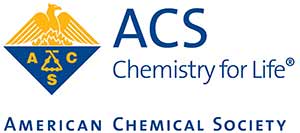Papers

The kinetics of the oxidation of oxyhaemoglobin by sodium nitrite has been studied spectrophotometrically. The reaction has been shown to be second order with specific reaction rate of 4.2 x 101 M-1s-1 at 25.0oC and at pH 6.80(Phosphate buffer). The energy of activation, frequency factor and entropy of activation are found to be 57.94 kJM-1, 5.994 x 1011 s-1 and -27.68 JK-1mol-1 respectively. In order to probe inside the mechanism, the effect of ionic strength is also investigated. The most likely mechanism is suggested for the reaction.

Tercopolymers were prepared by the condensation of 8hydroxyquinoline (8-HQ), dithiooxamide (D) and formaldehyde (F) in the presence of hydrochloric acid (2M) as catalyst with varying molar ratio of reacting monomers. Tercopolymers were characterized by their electronic absorption spectra, NMR spectra, IR spectra, elemental analysis and TGA. Molecular weight of tercopolymer were determined by non-aqueous conductometric titration. The kinetic and thermodynamic parameters such as order of reaction, energy of activation, frequency factor, entropy charge, free energy change and apparent entropy change have been determined. Freeman Carroll and sharp Wentworth method have been applied for the calculation of kinetic parameters while the data from the Freeman-Carroll method have been used up to determine various thermodynamic parameters. The static (isothermal) TG data were analysed by use of Sharp-Wentworth method and Freeman-Carroll method. The activation energy of the tercopolymers were calculated and it was observed that the 8-HQDF-IV was more stable than those of 8-HQDF-I, 8HQDF-II and 8-HQDF-III. This prediction on the basis of static TG data is an agreement with the prediction based on the activation energies and initial decomposition temperatures calculated from the dynamic TG curves.

The kinetics of oxidation of phenylalanine and phenylglycine by bromine have been investigated electrochemically. Both the reactions shown to be overall of second order. The specific reaction rate for phenylalanine is 0.18 x 102 M-1 s-1 and 0.50 x 102 M-1 s-1 for the phenylglycine at 25.0oC. The energy of activations, frequency factors and entropy of activations in case of phenylalanine and phenylglycine are found out to be 65.10 kJ mol-1, 4.64 x 1012 s-1, -10.70 J K-1 mol-1 and 63.19 kJ mol-1, 5.96 x 1012 s-1, -8.63 J K-1 mol-1 respectively. From results likely mechanism has been proposed.

A new inorganic ion exchanger, Antimony (III) Silico Molybdo Tungstate [Sb(III)Si MoW] has been prepared and characterized. The ion exchange capacities, distribution coefficients of 12 metal ions, effect of temperature and electrolyte concentrations on ion exchange capacity have been studied. The exchanger has been characterized by TG, XRD and IR studies. On the basis of difference in distribution coefficients (Kd), binary separations carried out are the separation of Al (III) from Hg (II), Cu (II), Cd (II), Ni (II) and Th (IV). The importance of the exchanger is revealed by checking the formulations of different antacid samples.

Sago starch was chemically modified by esterification with fatty acid chlorides of different chain-lengths (hexanoyl, octanoyl and lauroyl chlorides) in the absence of an organic solvent. The products with different degree of substitution (DS) were blended with poly(vinly chloride) (PVC) at various proportions by using conventional solvent-casting technique. The blends were characterized by FT-IR and, their thermal, mechanical and water absorption properties were investigated as a function of blend composition. Result of
FT-IR analysis showed that there was no intermolecular interaction between sago esters and PVC. The existence of sago esters in the blends had enhanced the thermal properties of pure PVC plastic. The blends also exhibited satisfactory mechanical property up to 20 wt % of sago ester content where they still retain 80% of pure PVC mechanical properties and showed a minimal water uptake capacity (<4 wt%).

A heterogeneous precipitate have been as ion carriers of the preparation of Nickel (II) selective membrane sensors. The electrodes give near-nernstian responses in the linear concentration range of 1N to 1x10-5 N with detection limits of the order of 10-5N. The stable potentiometric signals are obtained with in a short time period of 7 seconds. The effects of pH and the effect of medium have been studied found to give better responses. Selectivity coefficient values evaluated using fixed interference method. The sensors have also been as a indicator electrodes in potentiometric titrations of Nickel (II) ions with EDTA and its determination in alloy analysis.
Key words : Nickel(II), Aradlite-matrix, .

Some new derivatives of a-naphthyl amine have been synthesized and characterized by TLC, IR, NMR and Mass spectra. Densities and ultrasonic velocities of these compounds have been measured over the wide composition range at 313.15 K in Dimethylformamide (DMF) and Tetrahydrofuran (THF). From these experimental data, various acoustical and thermodynamic parameters were evaluated. Some of these parameters are isentropic compressibility (s), intermolecular free length (Lf), solvation number (Sn), relaxation strength (r), internal pressure (), free volume (Vf), Rao's molar constant (Rm), Vander Waals constant (b), molar compressibility (W) etc. The types of interactions in solutions of these compounds in DMF and THF are explained from the evaluated parameters.

Reaction of [1-cyclopropyl-6-fluoro-1, 4-dihydro-4-oxo-7- (1-piperazinyl)-quinolone-3-carboxylic acid with diazoazonium salt of 2-aminopyridine in acetonitrile to get 1-cyclopropyle-6-fluoro-4-oxo-7-[4-(pyridine-2-yldiazenyl)-piperazin-1-yl]-1,4-dihydro-quinoline-3-carboxylic acid derivative. This ciprofloxacin derivative again subjected to react with various -diketone in presence of sodium methoxide to get novel -diketone derivative of 1-cyclopropyle-6-fluoro-4-oxo-7-[4-(pyridine-2-yldiazenyl)-piperazin-1-yl]-1,4-dihydro-quinoline-3-carboxylic acid. Structures of these compounds were established on the basis of spectral studies viz. IR, 1H NMR etc.

The arylhydrizocyanacetamides (1) was prepared from the reaction of diazonium salts of substituted aniline with active methylene compounds such as cyanoacetamide. The compounds were reacted with substituted phenyl isothiocyanates in dry pyridine to give corresponding 2,4-N-aryl-as-1,2,4-triazine 3-thiones. Some of the compounds show promising anti-inflammatory activity.

3-chloro-4-fluoroaniline was taken in dioxane, solution of p-toluenesulfonyl chloride in dioxane was added dropwise with stirring. Then the mixture was refluxed to get 3-chloro-4-fluorosulphanilamide. Solution of sulphanilamide in DMSO was refluxed with various primary and secondary amines to get 3-amino substituted fluorosulphanilamides.


This work is licensed under a Creative Commons Attribution-NonCommercial-ShareAlike 4.0 International License











